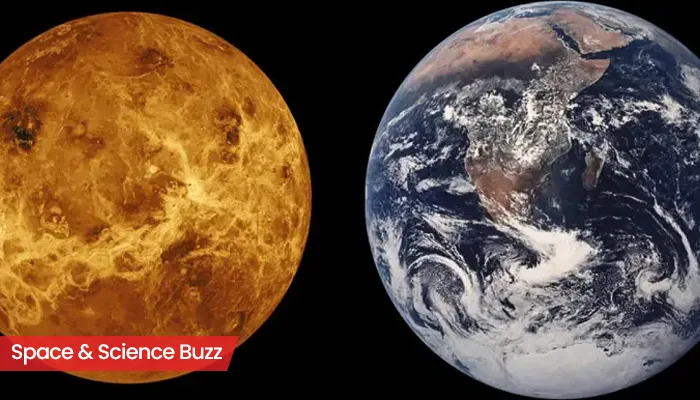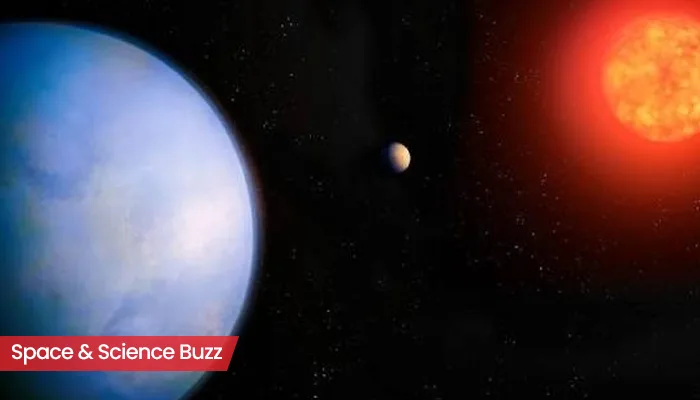
Here are today’s most important updates from the realm of Science and Space.
James Webb Space Telescope Unveils Hidden Secrets of Cassiopeia’s Supernova

The James Webb Space Telescope (JWST) has captured stunning details of a centuries-old supernova in the constellation Cassiopeia, located 11,000 light-years away. Using its advanced infrared technology, JWST revealed glowing gas and dust left in the explosion's aftermath, providing rare insights into interstellar dynamics.
At the 245th American Astronomical Society conference, researchers highlighted findings from Cassiopeia A, a supernova remnant showcasing intricate three-dimensional structures. Jacob Jencson from Caltech described how a "light echo" from the supernova illuminated surrounding gas and dust, uncovering complex patterns.
These observations, likened to CT scans for their precision, exposed magnetic knots and small-scale interstellar structures. Josh Peek of the Space Telescope Science Institute emphasized their importance in decoding the role of magnetic fields in star formation. JWST’s revelations have significantly advanced understanding of interstellar processes, opening new avenues for exploring the universe’s hidden mysteries.
ISRO Advances Reusable Rocket Technology with Vikas Engine Tests and LVM-3 Preparations

The Vikas engine, a vital component of ISRO's liquid rocket stages, is central to enabling the recovery and reuse of rocket stages, potentially reducing future mission costs. To validate its restart capability under varying conditions, ISRO conducted a test on January 17, where the engine fired for 60 seconds, shut off for 120 seconds, and then restarted for 7 seconds. The engine performed as expected, following a similar shorter-duration test in December 2024.
ISRO plans further tests to optimize the engine's restart performance. Meanwhile, the core liquid stage (L110) of the LVM-3 rocket was dispatched to Sriharikota for integration. This marks the 10th such stage built at the ISRO Propulsion Complex in Mahendragiri. The L110 stage is designated for the LVM-3 mission, set to launch the BlueBird Block 2 satellite through a commercial partnership between NSIL and AST & Science, LLC.
Elon Musk Reflects on SpaceX’s Two-Decade Journey Amid Starship Milestones and Challenges
We’ve come a long way https://t.co/LAKesdMyeD
— Elon Musk (@elonmusk) January 17, 2025
Two decades after SpaceX's inception, Elon Musk reflects on its remarkable evolution from a dream in 2002 to an aerospace giant. Musk recently responded to a post on X (formerly Twitter) showcasing SpaceX's journey, featuring early images of him in a cluttered lab alongside the powerful Starship rocket launch. Musk's comment, "We've come a long way," followed the recent Starship test flight from Texas, which lost contact eight minutes post-launch. Despite setbacks, SpaceX has achieved major milestones.
The June 2024 test saw the Super Heavy booster successfully splash down, while Starship's upper stage reentered the atmosphere. In October 2024, SpaceX achieved a landmark by catching the Super Heavy booster on its return and landing Starship in the Indian Ocean. November 2024 marked another breakthrough with the first in-space relight of a Raptor engine. These accomplishments highlight SpaceX's strides toward revolutionizing space exploration.
Prince Edward Island Witnesses Historic Meteorite Strike Captured on Camera and Audio

In July 2024, Prince Edward Island, Canada, witnessed an extraordinary event that may have captured the first-ever footage of space pebbles falling to Earth. Joe Velaidum and Laura Kelly were walking their dogs when they discovered debris scattered across their walkway. Initially assuming it was roof material, they were intrigued when Kelly’s parents mentioned hearing a loud blast.
Upon checking his home security footage, Velaidum confirmed it was a meteorite strike. Geologist Chris Herd of the University of Alberta studied the fragments, calling it the first meteorite fall from Prince Edward Island and a rare instance of a documented strike with sound.
"This marks a spectacular addition to the Island’s natural history," Herd noted, highlighting its uniqueness in capturing the meteorite’s journey both visually and audibly, a first in scientific records.



.webp)
.WEBP)
.WEBP)
.webp)
.webp)


.webp)
.webp)
.webp)